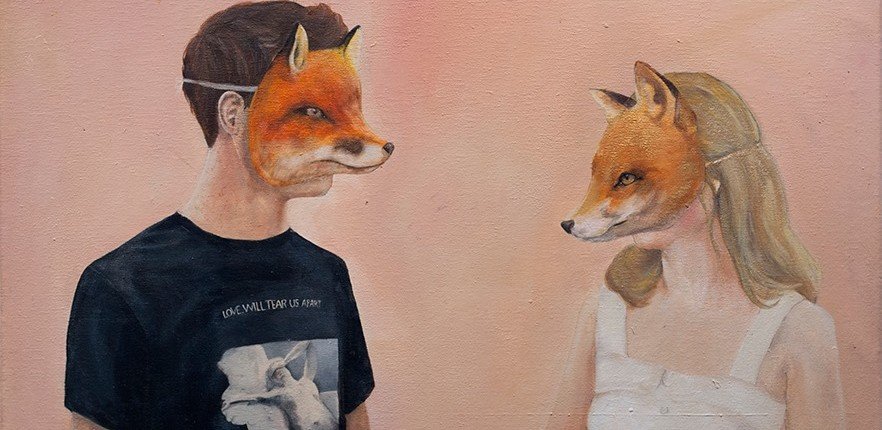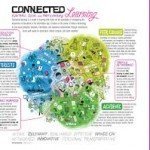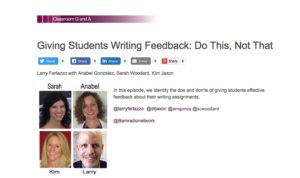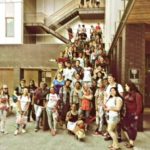 Thank you to the editors of this special issue of Composition Studies–Drs. Dawn Shepherd, Samantha Sturman, and Heidi Estrem–for a wonderful issue focused on corequisite writing courses. Bonus: working with my colleagues Laura Sparks and Chris Fosen to share the jumbo writing course was awesome. Many people have asked about the jumbo course design; grateful to be able to point folks to this issue.
Thank you to the editors of this special issue of Composition Studies–Drs. Dawn Shepherd, Samantha Sturman, and Heidi Estrem–for a wonderful issue focused on corequisite writing courses. Bonus: working with my colleagues Laura Sparks and Chris Fosen to share the jumbo writing course was awesome. Many people have asked about the jumbo course design; grateful to be able to point folks to this issue.
Blogs, Syndicated
Course Design in the Now Times
by kjaxon •
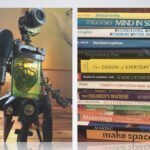 Like many of my colleagues who think about digital pedagogy, I’ve been fielding lots of questions from fellow educators as we shift to online teaching. Every educator I know is trying to get this moment right, to do our best to support learners. Universities and school districts are scrambling to support faculty and students as well, all with the best intentions. My own intention with this piece (the first in a series this semester) is to share course design practices and resources that might serve as alternatives to the primarily tool based, Edtech, approach. My fear: we’re worrying so much about solving problems of schooling that we’re forgetting to solve problems in our disciplines and in the world. More concerning, we’re allowing EdTech to rule our choices. Lots of companies are ready to sell us solutions for problems we didn’t know we had. At stake are our students (and teachers) and the ways their bodies are being controlled in the name of learning. We need to stop the outcomes, rubric, template, surveillance, plug in, packaged courses, frenzy.
Like many of my colleagues who think about digital pedagogy, I’ve been fielding lots of questions from fellow educators as we shift to online teaching. Every educator I know is trying to get this moment right, to do our best to support learners. Universities and school districts are scrambling to support faculty and students as well, all with the best intentions. My own intention with this piece (the first in a series this semester) is to share course design practices and resources that might serve as alternatives to the primarily tool based, Edtech, approach. My fear: we’re worrying so much about solving problems of schooling that we’re forgetting to solve problems in our disciplines and in the world. More concerning, we’re allowing EdTech to rule our choices. Lots of companies are ready to sell us solutions for problems we didn’t know we had. At stake are our students (and teachers) and the ways their bodies are being controlled in the name of learning. We need to stop the outcomes, rubric, template, surveillance, plug in, packaged courses, frenzy.
I offer an approach to course design that moves away from “how do I take attendance” and toward “how do I support a newcomer to my community?” The suggestions are also guided by the most frequently asked questions I receive from faculty.
One way to begin: a brainstorming session focused on your discipline
A few years ago, I was fortunate enough to join a small group of international educators to think about professional development support for faculty who wanted to rethink digital pedagogy. We created Connected Courses, which you can access for resources–readings, example activities, webinars–here. When we designed the first sessions, we began by asking educators to consider the “why” of their courses. Mike Wesch, a cultural anthropologist at Kansas State University, offered a model for thinking about the “why” by starting with our disciplinary identities:
As I contemplated the “real why” of my course further, I soon recognized that anthropology was not a bunch of content and bold faced terms that can be highlighted in a text book, but was instead a way of looking at the world. Actually, that is not quite right. It is not just a way of looking at the world. It is a way of being in the world. To underscore the difference, consider that it is one thing to be able to give a definition of cultural relativism (perhaps the most bold-faced of bold-faced terms in anthropology which means “cultural norms and values derive their meaning within a specific social context”) or even to apply it to some specific phenomenon, but it is quite another to fully incorporate that understanding and recognize yourself as a culturally and temporally bounded entity mired in cultural biases and taken-for-granted assumptions that you can only attempt to transcend.
Once we come to understand that our disciplinary identities shape who we are and how we work, you notice these differences often. In an early encounter with two science colleagues, as we prepared to research writing in science classes together, I watched as they argued about a question related to light that had emerged in their class. Leslie (physics) and Irene (biology) had come to my office deep in conversation; they looked around, searching for a white board in my space to hash out the disagreement. They could not believe I didn’t have a whiteboard since doing science and talking about science without being able to draw from images is, well, sort of unheard of. Even if I had had a whiteboard in my office, as an English professor, it would more likely be used for to-do lists. Tools, even white boards, do not serve the same purpose across disciplines.
My chemistry colleague, Lisa Ott, echoed these ideas this spring, as we were facing online teaching: “…you certainly can’t be a chemist without pouring some shit in a beaker and seeing what happens. It’s an experimental science.” Lisa spent part of her summer with chemistry colleagues thinking about how to solve the problem of being a chemist: “working on inquiry-based at-home analytical chemistry labs using microfluidic devices. We had so many discussions about what it means to be a chemist, different ways to teach students the practice of chemistry, alternative assessments– everything moving away from plug-and-chug and test, test, test. Everything moving toward playing in the places where chemists live.”
An activity to try:
I invite faculty to take some time, even 15 minutes, to think or write about disciplinary identities and the “whys” of your field. What does it mean to be an historian? An engineer? A poet? A political scientist? How do you move through the world and see the world? What questions guide your field? What are the tools of your discipline? What spaces do you inhabit online? For example, I’m on Twitter because all of the educators I collaborate with are on Twitter. Computer scientists occupy spaces in GitHub. None of my colleagues, or the ideas in my field, live in the LMS.
Apply your brainstorming session above to course design:
- Ways of being: who are students invited to be in your course (beyond “a student”)? Do they have an opportunity to try out, even in failed attempts, what it means to be this kind of person? In art classes, for example, students are invited to gallery walks and critiques, mentored in ways of talking about art with other artists.
- Ways of working: What does it look like to do history or political science instead of learning about history or political science? How can you invite students to work in the ways your field works? What does informal writing look like in your field (email exchanges? Notes on paper? Chats in front of whiteboards?)? How might you break down formal assignments or projects into the “behind the scenes” parts? Which platforms or tools does your field use? Github, Adobe Illustrator, Google Docs? How do you collaborate with colleagues? Again, using DropBox, Google? Exchanging Word documents in email? What if you were leading a workshop with colleagues in your field: which tools would you use?
- Ways of situating: Where do your professional communities live online? For example, I point my students to the National Council of Teachers of English (NCTE) and invite students to sign up for their newsletter. I request free copies of NCTE journals and hand those out to students. I point them to educators to follow on Twitter and introduce them to Instagram accounts like WeNeedDiverseBooks. In other words, I point them to where the fish are swimming in my field, toward the communities my students want to join.
I recognize the desire to limit the amount of platforms, tools, webspaces we are asking students to join or sign up for. This point is not trivial. But we are doing students a disservice, we are gatekeeping access, when we hide the communities they want to be a part of and only play in schooled platforms. Students do not need proficiency in learning how to use the LMS discussion board, the way to submit essays in TurnItIn, how to navigate a publisher’s textbook and quiz bank, and the worse, how to take a quiz while being proctored, and yet so much of their education are lessons in schooled practices, not the rich practices of our fields. Students are already asked to use a ton of tools; how cool would it be if they were using tools that exist in the world, in their fields instead. Trust students; they are capable. They desperately need and want to play and learn for real.
tl;dr: who do students get to be in your classroom and what do students get to do in your classroom? Is the thing you’re asking students to do a thing that people do in your field? Is it a thing people do in the world outside of school? Carefully select any digital tool based on the answer to those questions. Ask yourself if your colleagues would recognize the tool. If you must, use the LMS for your syllabus and a calendar and then get them out of there and into the communities of your field.
One next step: building community and attention to noticing
By far, the question I am asked most frequently is about classroom community, stemming from the fear of its loss. For what it’s worth, here are some ways I intentionally design for community in online classes. Some of these ideas are no doubt things many of you are already doing:
- Surveys: A week or so before the semester starts, I send students a survey. I ask about their technology access and comfort, including some lists about specific tools. Since I teach writing, I ask about their experiences and views with writing in their lives. I leave some open questions so they can share concerns or ask me questions. This semester, I’m asking how they would prefer to receive weekly updates: in announcements, in email, on our website, in an app like GroupMe. I’ll post updates in most of these places, but also create personalized ways of sharing information (a small group who chooses GroupMe and a group who chooses email, for example). I see this as a simple copy and paste issue that may make their life easier: they can opt in to how they want to communicate. I send surveys about once a month to see how things are going in our class: I ask what is working, what is not, suggestions for adjustments, all anonymously.
Videos: I record weekly videos to supplement the announcements. I try to do these outside, borrowing from Mike Wesch. He has a great YouTube series here you can subscribe to. I plan to level up this semester by trying out his “mixed tape” idea for weekly updates. Here is the quick video I recorded for one of my classes this fall. - First week: I see the first few weeks as crucial to community building. I start with the obvious: introductions.
- I use Currents (formerly G+ Communities) since students do not need a separate login; they can use our campus login information. Since many of my students are future k-12 teachers, introducing them to the Google Suite of apps is important since most school districts use this platform. Everything we use is something they can use in their own classrooms. For the introductions, I give them some choice of format: video, short writing, audio, a series of images. I model an introduction too.
- I comment as quickly as introductions appear and make connections on their posts, often sharing a link to a book, a film, something connected to their interests that also connects to the ideas in our class.
- I email/communicate immediately on the first week and establish the weekly routines.
- I have some reading/writing activities and respond within days on that first week. They will keep doing fabulous work when they know someone is reading it and engaging with it. We think so much about student engagement, but do we demonstrate our own engagement with their ideas?
Noticing and celebrating student work
- Review board: I’ve written about the use of a review board previously in articles about large course design. This passage from “Epic Learning…”
As an example of one structure that supports, and more importantly, makes noticeable, the scholarly work of students, I ask students to participate in a “Review Board.” Each workshop team sends a representative to meet with me for an hour outside of class time each week. The Review Board is responsible for reading the work of their peers and nominating a writer to be featured in class. We end up with nine featured writers — one from each workshop — and we pick a few to talk about in the large class. The review board’s job — back in the large class — is to present the writing, talk about why they think it represents some of the best thinking that week, pose questions to the featured writer about her choices, and celebrate their peers. I am always impressed by this small Review Board team: without prompting they will often ask “what was the purpose of the writing this week?” Or they will say, “we featured her work last week; we should make sure someone else is featured.” The students recognize that the writing is intentional and that we value the ideas from as many students as possible in our class. Each week, a new batch of scholars emerge and are highlighted in our space — and over time — we build a community where the students are noticed.
- Featured curators: In a few of my classes, I ask students to be responsible for the noticing of great ideas from our class and their peers. One time in the semester, they are invited to review the work our class has produced that week and write a blog that highlights the work. You can see an example here.
- Ongoing amplification: I always use the weekly updates and reminders to amplify student ideas. I often mention students and their ideas and questions in the weekly videos. I include short passages from their work, awesome questions someone asked, “golden lines,” which are favorite sentences from each students’ writing that week. Sometimes I ask them to highlight a favorite sentence from a peer or from their own writing; they send these to me and I include them in the update.
A note about synchronous and asynchronous approaches to community: One response to a fear about the loss of community is an attempt to duplicate community through platforms like Zoom. If a course design is discussion heavy, it is challenging to imagine ways to redesign without class discussions. Students want connection too: in surveys from spring, they asked for more connection to their peers and faculty. We all miss each other. In the many years I’ve taught online, I’ve never used Zoom or a synchronous model of teaching. I have found that asking students to write, read, make, share, celebrate can stand in for “talk” in class. I do use Zoom (or Google Hangouts or Skype) to collaborate with colleagues, so I understand the affordance. But, the way we’re using Zoom does not look like the ways I use it to collaborate with my peers. When I use these platforms with students, I invite them to use the platform like I do with colleagues: webinars, virtual writing retreats, consultation sessions. In fact, the virtual writing retreats have been quite successful. We meet to check in, we work offline, then come back together for feedback. I can imagine building, making, playing with all kinds of ideas in this simple structure. An opportunity we have in this moment is to connect students to colleagues in other places, students at other campuses who are researching similar ideas. We can invite an author to talk to our class about a reading on Zoom. I’m hopeful that we can use the platform as a way to model how we use platforms such as these professionally.
What I dream about for the future of higher education in particular is that we support faculty and students as they figure out how to use the web and digital tools, like, for real. We need support in thinking about copyright, surveillance and privacy, accessibility, access, and equity. We should have spent the last 10 years inviting people to learn about the web, to really know how to navigate and make decisions about tools and platforms. Instead, we invite people to work in sandboxes behind schooled walls in the name of being safer or more accessible. Unfortunately, using a campus tool does not make it any more accessible: faculty who upload a reading as a jpeg instead of a pdf into the LMS did not make the reading accessible, for example. Moving forward, we have an opportunity to use this moment to learn more about digital practices that live beyond any one tool.
Resources:
If you’re interested in the messiness of my course design process, here’s a draft for one of my fall 2020 courses: English 332
Links to all my courses can be found on my site (kimjaxon.com) in the sidebar.
If you’re interested in resisting EdTech and need support, here are current resources you can point to:
- Audrey Watters’ recent talks: “Building Anti-Surveillance Ed-Tech” and “Luddite Sensibilities and the Future of Education.” Her site has much more: Hack Education.
- Jesse Stommel and Sean Michael Morris’ “A Guide for Resisting EdTech: The Case Against TurnitIn.”
- Hybrid Pedagogy journal
- Shea Swauger’s “Software that monitors students during tests perpetuates inequality and violates their privacy” and “Our Bodies Encoded: Algorithmic Test Proctoring in Higher Education.”
Resources for accessibility in course design:
- For colleagues on my campus, Chico State, start with our incredible Office of Accessible Technology and Services (OATS). Even if you’re not on our campus, lots of helpful information and resources on their site.
- Three Steps to a More Accessible Classroom, which ends with other useful links with an eye on accessibility.
- GrackleDocs, which checks Google Docs.
- Also, this resource both supports and critiques Zoom. I especially appreciate the Guide for Students on page 20.
Blogs, Syndicated
On Being Full
by kjaxon •
It is 1994.
The milk crate is heavier than I remember as I haul it down from a high shelf in the bedroom closet. The plastic box lands with a thump on the bedroom floor. I settle in around it on the low carpet, legs straddling the dusty contents, my back supported by the empty bed. I worry that the noise will stir the two toddlers, sleeping across the hallway underneath their 101 Dalmation comforters. I decide to jump back up, do a quick check, peeking carefully around the partially closed door, before I start what I know will be a confusing reconciliation of my past with my current situation.
With the quiet glow of the toddler’s night light comforting me from across the hall, I lower myself back into position, perfectly matching the indent I’ve just left in the vacuumed carpet of my own bedroom. I pull out the expired college catalog and open it first. Occasionally, I blow the dust off the edges of pages. I pour through the options in the catalog, skipping the pages of majors I’ve already attempted (Political Science, Construction Management…). Overwhelmed by the options, I set the catalog aside and flip through the remaining contents, working my way through the folders like old records.
I grab a faded and torn, seaweed colored folder near the back of the crate, which carries the contents of my school past. Sprinkled among the folder’s official documents–mostly grade reports and transcripts–is a hodge-podge of artifacts: a picture of Ashley, her two year old self standing in our small garden in big work boots; my hand written “Activities-Record” from high school, jammed packed with lists of accomplishments–student body president, “most outstanding senior girl,” leadership awards, and cheerleading camps–lists used to help write my original admission letter to Chico State in 1984; the scores from my English placement test (high) and my math test (low); an old grocery list. I am not certain how this coffer full of folders is the solution to my current situation, but it somehow seems to hold a past and a future more hopeful than the constant, abusive present I’d been living in.
When we first moved to Peach Street, like every move before, I had high hopes. We packed up the contents of a two-bedroom apartment, hauled boxes down steep, concrete stairs while Nick and Ash wailed and rattled, safe from the stairs behind a baby gate. Those steep stairs and the busy street below had been a constant source of fear, particularly as 1 year-old Nick had learned to open the front door. We loaded the toddlers into car seats, boxes towering above their heads from the backseat, and drove the 40 minutes to a small farm town, where my spouse would join his family’s rice farming business. Farming felt safer, more family friendly, than the construction life we had been living. It seemed more sober. The tiny house on quiet Peach Street we pulled up to was not ours, but it had a big backyard with an old, wooden playhouse and stubborn windows that opened to the smell of lilacs.
Within days, the spouse disappeared as he always did. I mostly knew where I could find him–a quick check of any number of local bars would be easy–if I bothered to look. But my days of strapping infants, now toddlers, into their cars seats only to have my concerns confirmed were growing old. The backroads between the small town bars felt less and less safe; the roads mostly led me to an embarrassing argument in the middle of a bar, faced with a drunk spouse sitting next to some woman he had no desire to leave for a wife and crying toddlers. My home routine, away from those places, was in control: wake up alone with adorable toddlers, make homemade Playdough and go on bike rides, come home from the park and make peanut butter and jelly cut into animal shapes. As Ash and Nick played with Little Tikes and Polly Pockets, I scrubbed the abuse and fear from the house with every product under the sink; the smell of Pine-Sol, Windex, Comet, and bleach created a witchy mixture, chasing out the chaos lurking in every corner of this tiny home. After 4:00pm–the marked hour when I knew that once again he was unlikely to come home–I would feed the children, read books, and rock myself to sleep in the corner. Honestly, over the years, I stopped longing for him to come home and had learned to welcome the break from his temper and drunk confusion.
Reaching for the milk crate came after a long week of isolation. He had, once again, drained our bank account dry. I was mad at myself: I usually managed to get to the bank before him on the days I knew his binge was coming, draining the money myself. I kept the depleted funds for groceries and rent and phone bills, and far too many trips to Toys R Us in an attempt to distract Ash and Nick from the reality of our life. I returned the cash to our bank account once I knew we had a few days of stability before us. But exhaustion had kept me from loading the three of us into the car that hot, summer day and now I found myself with a past due rent, a cut off phone, and an empty gas tank. That night, as the sweet babes slumbered, the mantra in my head grew too loud to ignore…you have to get out of here, you have to get out of here, you have to get out of here. Without a phone line to the women in my family, no one could convince me to stay just a little longer, assure me things get better, or talk me through the current trauma. All short term solutions had failed– moving home with family, asking him to 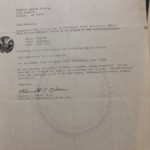 leave for good–I knew I had to plan for the long term escape. Old transcripts and catalog in hand, I began to match coursework completed to college majors, wiping away tears as I imagined a new future with my former, stronger, self. I wrote “English major” when the petition for admission form asked for my area of study.
leave for good–I knew I had to plan for the long term escape. Old transcripts and catalog in hand, I began to match coursework completed to college majors, wiping away tears as I imagined a new future with my former, stronger, self. I wrote “English major” when the petition for admission form asked for my area of study.
I did not know that future would become this path, that I would meet the most incredible mentors the moment my foot stepped on campus, and again at Berkeley, and find other strong women who would carry this burden with me. That I would meet and marry Jeff. That I would create a way to be whole and full.
Blogs, Syndicated
EdWeek Teacher: “Technology Doesn’t Replace Good Teaching”
by kjaxon •
 Link to recent article with Larry Ferlazzo’s EdWeek Teacher
Link to recent article with Larry Ferlazzo’s EdWeek Teacher
Blogs, Syndicated
Thank you to Larry Ferlazzo, Sarah Woodard, Anabel Gonzalez, and BAMRadio
by kjaxon •
Blogs, Syndicated
Thank you to Larry Ferlazzo, Sarah Woodard, Anabel Gonzalez, and BAMRadio
by kjaxon •
Blogs, Syndicated
Thank you to Larry Ferlazzo, Sarah Woodard, Anabel Gonzalez, and BAMRadio
by kjaxon •
Blogs, Syndicated
Amplifying Student Voice Through Digital Resources, Part 1 & 2 on DMLCentral
by kjaxon •
 Grateful to the students who generously share their writing with us…
Grateful to the students who generously share their writing with us…
